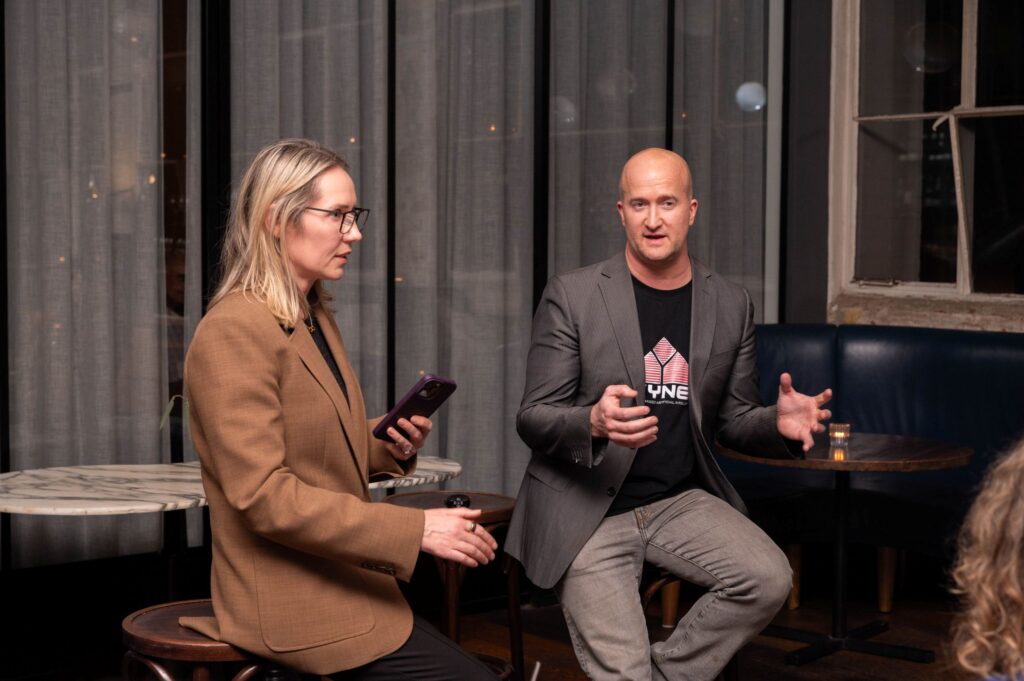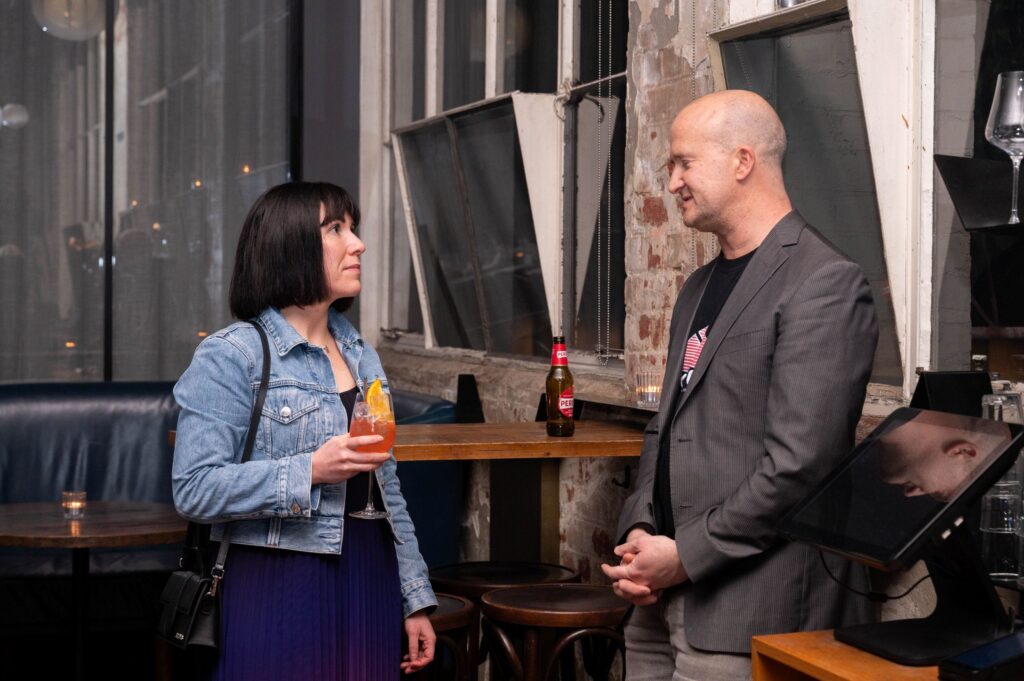The Power of Precision: Achieving Cross-Channel Harmony in the Age of 1st-Party Data
Introduction
The digital marketing landscape is at a critical inflection point. While marketers have rapidly adopted AI tools in their personal lives, business implementation remains notably absent from customer-facing experiences and strategic decision-making. At the same time, search behaviour is undergoing a fundamental transformation that threatens to reshape the competitive landscape, and traditional approaches to measurement are giving way to more sophisticated, AI-influenced models.
This was the strategic context that drove discussions during a recent executive roundtable hosted by Wunderkind, supported by Connect Media. The roundtable convened senior ecommerce and marketing leaders to explore practical strategies for leveraging AI, adopting dynamic measurement tools, and preparing for seismic shifts in how consumers discover and purchase products.
Conversations were led by Anna Samkova, Co-Founder & Strategic Partner at Albany Advisory, with insights from Dan Ferguson, Former CMO of Adore Beauty.

The AI Implementation Gap
The conversation opened with a striking observation about AI’s current role in marketing. Marketers have developed passionate personal relationships with AI tools, particularly ChatGPT, using them extensively for everyday tasks. Yet this enthusiasm has not translated to business applications. AI is typically nowhere to be seen on most business websites, and few marketing organisations are using AI to inform budget allocation decisions.
Still, practical applications are emerging. Simple tasks that previously required significant manual effort can now be completed rapidly. Analysing the correlation between changes in channel spend and top-line revenue variations used to require a full day of work building waterfall charts. Now, copying revenue data and spend figures into ChatGPT delivers correlation analysis in approximately thirty minutes.
Despite these capabilities, conserved systems that help marketers make ongoing budget decisions remain absent. Most AI features embedded in marketing platforms feel hastily assembled rather than genuinely useful. The reality is that bringing together information from multiple platforms and deciding where to increase or decrease spend still requires significant manual work.
Dynamic Marketing Mix Modelling Revolution
Traditional Marketing Mix Modelling required substantial investment (typically around $100,000) to conduct studies that looked back over six months. Dynamic MMMs have transformed this landscape. These new models, influenced by machine learning and AI, run monthly rather than biannually and are widely available at dramatically lower costs, around $3,000 to $5,000 monthly.
These tools move beyond last-click attribution to provide accurate reads on how channel spend variations affect revenue over extended periods. This reveals critical insights about diminishing returns. Base spend on Google might deliver fifteen times return, but incremental spend may only generate three times return. This understanding helps marketers recognise when additional spending on a channel stops being effective.
Perhaps most significantly, dynamic MMMs have reopened opportunities in above-the-line channels. Radio and other traditional media have been systematically underinvested because measurement difficulty made them frightening platforms for digital-native marketers. Once marketers have accurate, consistent reads showing radio delivering fifteen times return, they can confidently triple spend during key periods. These channels represent wide-open opportunities, whereas spending even twenty percent more on Google becomes increasingly difficult due to diminishing marginal returns.


The ChatGPT Search Disruption
The search landscape is experiencing dramatic transformation. A year ago, ChatGPT represented approximately 1.5% of search traffic while Google maintained 98.5%. By March, ChatGPT’s share had reached 3.5%. Current data shows it has now hit 6%. When these figures are fed into ChatGPT itself to predict future trends based on logarithmic acceleration, projections suggest 18% within a year and 60% within two years.
These trends make sense when you consider that ChatGPT can solve for virtually all search needs, from finding restaurants, planning trips, anything that would previously have gone to Google search. For ecommerce, the critical insight concerns conversion rates. Traffic coming from ChatGPT converts at significantly higher rates than Google search traffic because ChatGPT addresses customer concerns before they reach a website. Users arrive ready to buy rather than still in research mode.
This raises a fundamental question: if AI improves conversion rates by reassuring customers and reducing objections to purchase, why don’t retailers have that functionality embedded in their sites? Essentially, no Australian retailers have implemented this capability. Retailers need to embed AI into customer experience at the product page level, underneath the buy button, with behaviour-triggered questions to assist purchase decisions.
Email Automation & Rising Competition
Using Google Trends to search for “email flow resource” reveals a dramatic curve. Search volume for these resources has increased roughly twentyfold in the last two years. This explosion reflects a step change in ecommerce competition. The globalisation of talent means businesses can now find email automation specialists anywhere in the world, fundamentally raising the competitive bar.
This trend illustrates a broader point: small adjustments to existing Meta or Google spend will not suffice to compete over the next few years. The opportunities and risks are much larger than marginal optimisation. Businesses need to respond with substantial strategic changes rather than working at the margins.
Product Strategy & Brand Partners
A significant strategic insight raised through the roundtable concerned how ecommerce retailers should think about brands and products they carry. Rather than viewing brand partners purely as sources of revenue, marketers should analyse them as varied sources of new customer acquisition. Different brands deliver different percentages of new customers and have different associated caps on acquisition potential.
By examining aggregated spending to acquire customers from specific brands, retailers can calculate the cost per new customer and the total addressable customer base for each brand. This analysis might reveal that adding fifty more brands could generate 5,000 additional new customers monthly, with a customer acquisition cost of $7 compared to another brand’s $52.


Bridging Online & Offline Channels
For organisations operating across online and offline channels, a persistent challenge involves justifying digital investment to offline stakeholders. One Officeworks experience illustrated effective approaches. Rather than expecting offline teams to care about online simply because it represented the future, the strategy focused on manufacturing tangible benefits that offline stakeholders could recognise.
This included providing merchandising teams with data on trending products and the differential value of customers arriving at different brands, enabling better buying decisions. It meant sending new customers to stores for order pickup or directing them to specific locations based on specialised inventory. Once offline stakeholders experienced these benefits, they often became advocates.
An internal PR campaign becomes essential: creating weekly reports showing stores how much revenue the online channel generated for them. While there are hundreds of potential tactics, the consistent thread is finding ways to manufacture benefit for offline teams and making that value visible through data and regular communication.
Conclusion
The marketing landscape is experiencing simultaneous disruptions across search behaviour, measurement capabilities, and customer expectations. Dynamic Marketing Mix Modelling provides accurate channel performance data necessary for confident budget allocation, revealing both diminishing returns in overinvested channels and untapped opportunities in undermeasured ones. The rise of AI-powered search demands that retailers bring similar functionality directly into their customer experiences. Email automation and global talent access have raised competitive intensity, requiring sophisticated marketing automation strategies.
Most fundamentally, marketers must shift from short-term tactical optimisation to strategic changes that will deliver competitive advantages over a two-year horizon. The organisations that will thrive are those willing to make substantial changes now rather than waiting for perfect clarity that will arrive too late.










